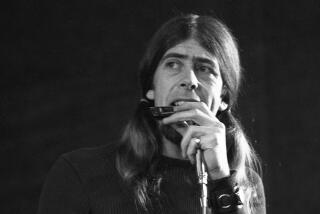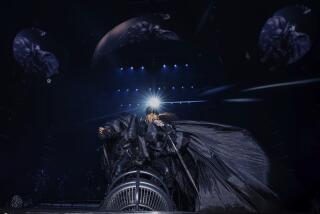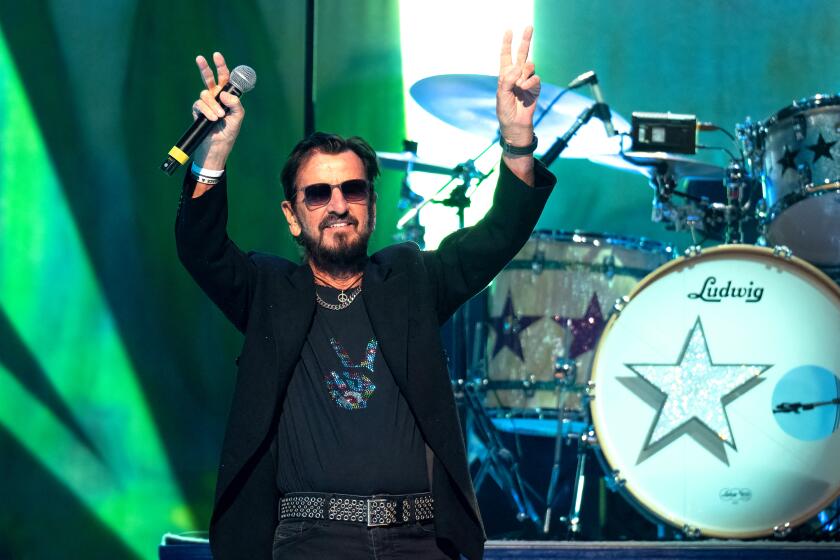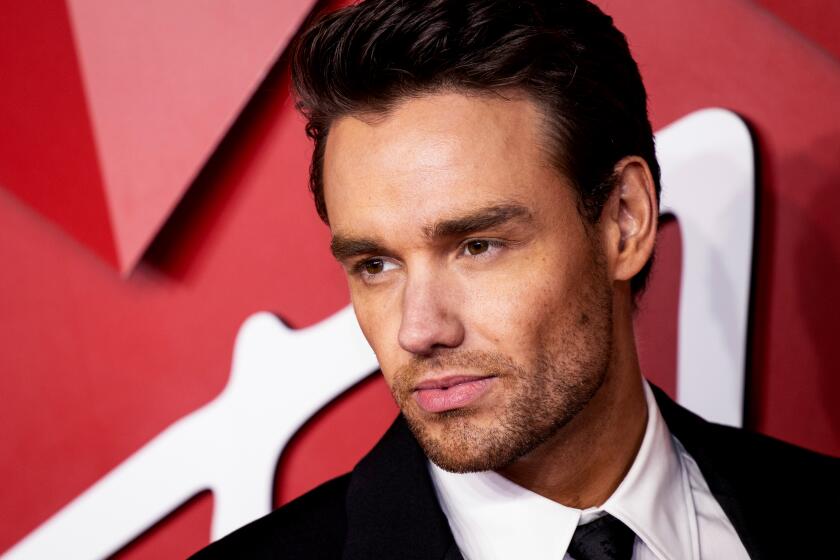JAZZ REVIEW : Superior Session of Fusion at Playboy Fest
The theme for Sundayâs jazz session at the Hollywood Bowl could have been âWhat a Difference a Day Made.â It was hard to accept that the same producers for Saturdayâs half of the Playboy Jazz Festival were also responsible for the vastly superior presentation 24 hours later.
Fusion worked in its several manifestations, from the Brazilian-tinted Latin jazz ensemble of Flora Purim and Airto to the guest appearance of pianist Lalo Schifrin bringing his Argentinian soul to a Dizzy Gillespie band made up of Afro-Americans, Cubans and Caucasians in a riotous update of âManteca.â
The biggest crowd mover, almost an earthshaker, was Spyro Gyra, whose pop fusion formula worked its way implacably toward two uproars and two encores. The formula involved no audience seduction a la Kenny G; though it stayed on far too long, the band is valid on its own modest level. Jay Beckensteinâs saxophone is the big fish in this creatively confined pond, though some of the most interesting solos were the work of vibraphonist Dave Samuels.
Even the brief opening appearance by jazz talent contest winners came out ahead. Harold McKinneyâs piano solo on Fats Wallerâs âJitterbug Waltzâ exuded buoyancy and charm. He was followed by Scott Kreitzer, a tenor saxophonist mature beyond his years, with a style grounded in the mainstream.
A sextet aptly billed as the Timeless All Stars blended class, insight, depth and passion with its impeccable front-line blend of Harold Land on tenor, Curtis Fuller on trombone and Bobby Hutcherson on vibes. Creative juices flowed freely in originals by these men and others by the bassist, Buster Williams, and pianist Cedar Walton. Drummer Billy Higgins completed this flawless group.
The band of Jimmy and Jeannie Cheatham proclaimed its loyalty to the everlasting verities of the blues, with Mrs. Cheatham at the piano keeping the spark alive and her lyrics mercifully intelligible. Too bad trumpeters Snooky Young and Clora Bryant were denied featured spots while the saxes assumed a heavy solo burden.
The Latin interlude by Purim, Airto & Co. was part Brazilian, part West Indian, due to the sound of Andy Narellâs steel drums. Purimâs voice interacted neatly with Gary Meekâs saxophone. Dave Valentin, a slick flutist, served as ambassador for the pipes of Pan-Americana. For anyone in search of a light interlude of whistling, bird calls and echo effects, Airto supplied them. More germane to the Latin mood was an arrangement of Wayne Shorterâs âFootprints,â so complex that trying to figure out the rhythms was like working an acrostic.
Pianist Ahmad Jamalâs quartet (bass, drums and percussion) functions more convincingly as a unit than any other group of its kind. Sedulously building a Josephâs coat of many colors and moods, Jamal worked tightly with the others, but not without leaving them room to reveal their separate images. Bassist James Cammack left no doubt that the electric bass can belong in a small acoustic jazz unit.
Along with a sense of deja entendu in the 20-man Dizzy Gillespie orchestra, there was a stunning reminder of the headway jazz has made. The updates of material from the 1940s were delivered with a conviction and powerhouse abandon of which no orchestra in the early bop days would have been capable.
In addition to the leader, five other trumpeters spun their way through charts so demanding that they would have made mincemeat out of any old-timerâs lips. Listening to Jon Faddis, whether in a section-leading or solo role, one felt oneâs own chops aching by osmosis. The man is, in the jazz vernacular, ridiculous.
Gillespie was, of course, a pioneer in the fusing of jazz and Afro-Cuban rhythms. His âNight in Tunisia,â with the Cuban percussionist Ignacio Berroa heavily featured, was as undated as an open check. So was his arrangement of âLover Come Back to Me,â its meters switching from 6/4 to 3/4 to 4/4. Gillespie himself, though he let the other trumpeters shoulder much of the burden, acquitted himself better than at any time in recent years.
Bobby McFerrinâs one-man vocal circus is like nothing else in show business. Though much of his time was devoted to interaction with the crowd (he even wandered around turning the names of customers into ad-lib songs), the startling changes of range, from bass to soprano, are the aural equivalent of a Wall Street chart during a panicky week. Alone, McFerrin put his imprimatur on everything from John Coltraneâs âNaimaâ to âThe Star-Spangled Banner.â For a while, too, he dueted with a remarkable bassist, Rob Wasserman, in a spine-tingling âAll Blues.â Emcee Bill Cosby coaxed him into a couple of encores; he could well have closed the show, but finally we were informed that Mr. Charles was ready.
Ray Charles has been on automatic pilot with his show for decades. Legs flailing, voice croaking, blues piano ablaze, he went through motions his listeners have learned so well that they offered the ritual responses. Why the reluctance to update the act? Is he just playing it safe? Or simply lazy? No matter; only the most cantankerous of customers could have left this eight-hour banquet feeling less than completely sated.
Sundayâs attendance was 17,788.
More to Read
The biggest entertainment stories
Get our big stories about Hollywood, film, television, music, arts, culture and more right in your inbox as soon as they publish.
You may occasionally receive promotional content from the Los Angeles Times.










